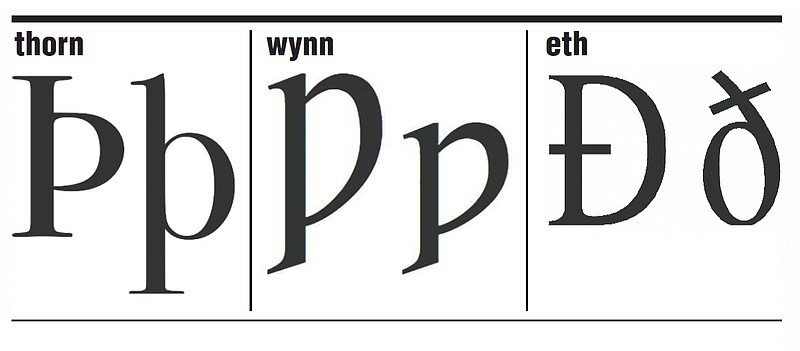

It was generally used to express the slightly longer “th” sound with a slight hint of a "d", a bit like the beginning of “thought” or “thump.” It isn’t clear why the letter fell out of favor, although scribes stopped using it towards the end of the Middle Ages. Eth/Edh (ð)Įth (ð) is another letter used in Old English that has a similar story to Thorn. Since many of the printing presses at the time were imported from Germany and Italy, however, they didn't have a Thorn letter, so they simply used a "y" instead. Thorn is the reason why some old-timey sentences that read stuff like: “Ye Olde Tavern.” In these cases, the "ye" is not pronounced with a "y" sound as we see it today it was actually pronounced with a "th" sound. One of the letters derived from Runic alphabets was a letter called Thorn (Þ, þ), used to express the sound “th” makes in words such as "the" and “this.” It's still used in the modern Icelandic writing system, which has close links to Old Norse. The "Latinization" of the language did a good job at standardizing the alphabet across ancient Europe, but a small handful of these relics managed to sneak their way into some forms of the English written language until just 100 years ago. The alphabet of Old English – the predecessor of modern English used in the early Middle Ages – also contained a number of letters that were derived from old regional dialects, Runic alphabets, the Gothic language, and Old Norse. And that’s why we have those cheesy “Ye Old” shop signs now.However, like all writing systems, it’s history is complex and muddled with a whole load of interconnected influences from the past. It was the thinking then that the letter y most closely resembled the thorn, so printers substituted it with a y. This is because early printing fonts had to be imported from Germany and Italy, where there was no sign for thorn. The printing press is what led to this ye confusion and ultimately the demise of thorn. A long, long time ago when English was still Old English, the letter people used to represent the th sound was represented by a letter called “thorn.” (The thorn looked like a letter p with the hump part scooted down to the middle.) During these times, communicating with the written letter thorn was no problem, as written communication consisted of using pen and ink. In these cases, ye is not pronounced with a y sound, as we are used to hearing. We’ve all seen those kitschy, old-timey business signs like “Ye Old Curiosity Shop,” or “Ye Old Hat Shop,” or “Ye Old Beer Stand.” Shockingly, this whole time we have been mispronouncing these names. This is what the letter thorn looked like.


 0 kommentar(er)
0 kommentar(er)
